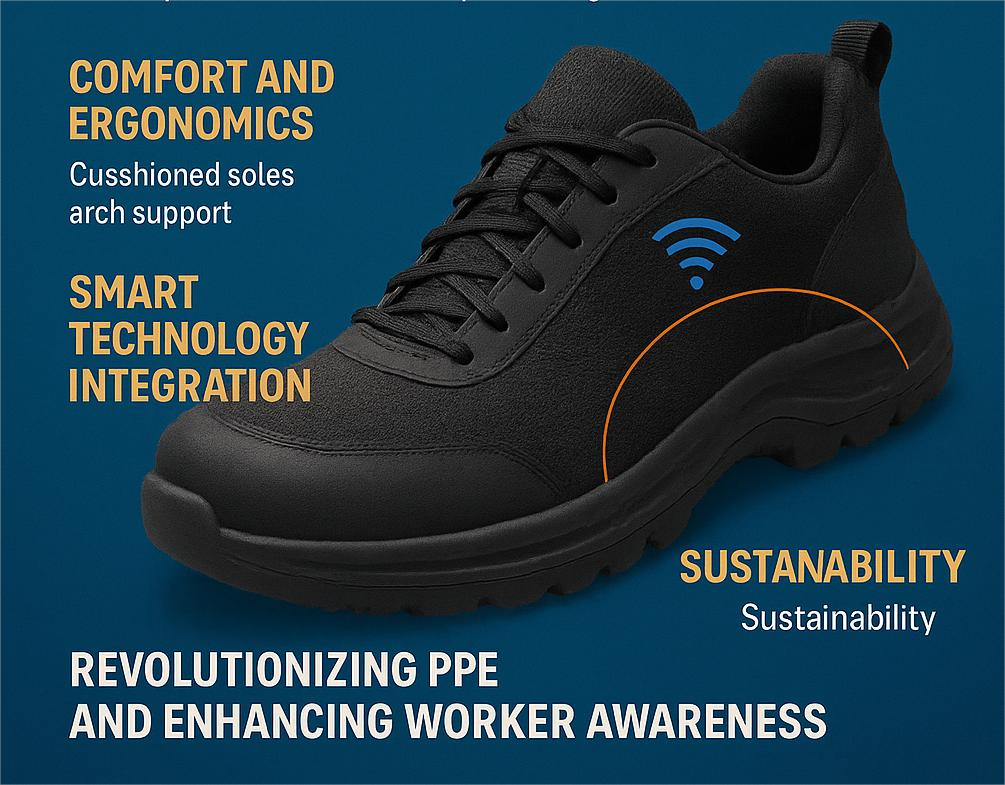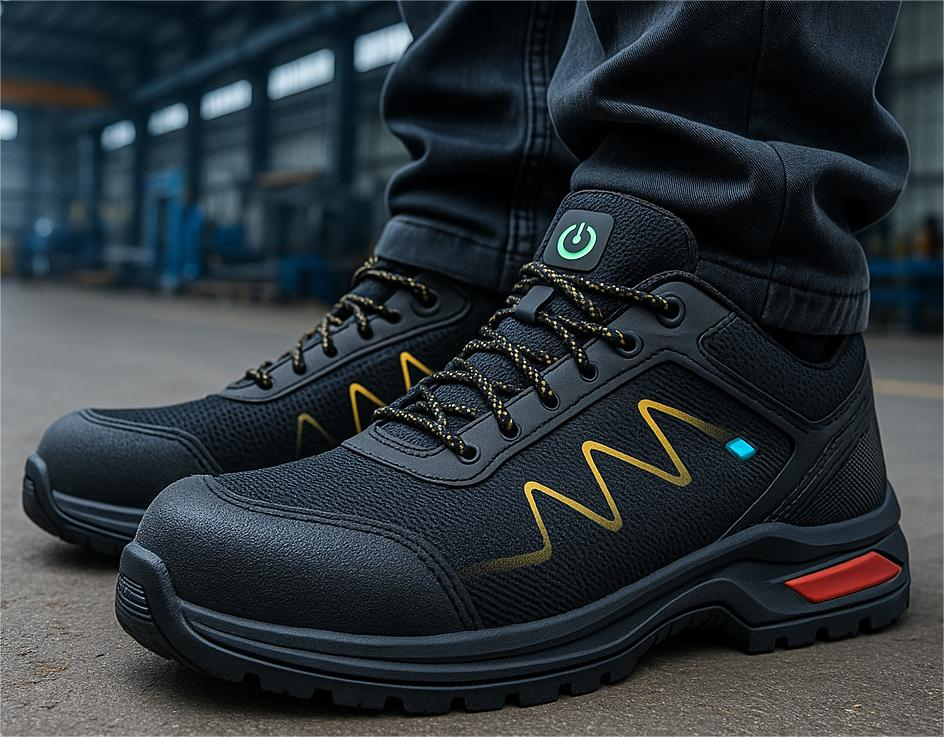Smart and Sustainable: How Next-Gen Safety Shoes Are Redefining Worker Comfort and Protection in 2025
Safety Training & Awareness Programs | BookMySafety Workplace Safety Solutions
September 30, 2025Beyond The Shell: How Smart & Connected Safety Helmets are transforming Head Protection in 2025:
November 3, 2025Smart and Sustainable: How Next-Gen Safety Shoes Are Redefining Worker Comfort and Protection in 2025

Workplace safety has always been a priority, but in 2025, the focus is shifting from just protection to a holistic approach that combines comfort, durability, and sustainability. Among the essential PPE (Personal Protective Equipment), safety shoes remain a cornerstone for preventing foot injuries and ensuring worker efficiency. However, the next generation of safety footwear is no longer just about steel toes and slip-resistant soles. Today, smart and sustainable safety shoes are designed to enhance worker comfort, reduce fatigue, and integrate innovative technologies that actively support workplace safety.
In this post, we’ll explore how 2025 safety shoes are transforming worker experience, the technologies behind them, and why investing in modern safety footwear is a smart move for companies prioritizing both protection and productivity.
The Growing Importance of Safety in the Modern Workplace
Workplace safety has always been a top priority, but the focus on employee well-being has intensified in recent years. According to recent industry reports, slips, trips, and falls remain among the most common workplace accidents, often caused by inadequate footwear or insufficient safety awareness.
Safety training programs have traditionally emphasized procedures and hazard recognition. However, as technology advances, PPE innovations, particularly in footwear, have become critical in reducing workplace injuries. Smart safety shoes now provide real-time support, monitor physical stress, and guide workers to adopt safer practices—all while being eco-friendly.
From Basic Protection to Intelligent Safety Footwear
Traditional safety shoes mainly protected against hazards like falling objects and sharp surfaces, but their heavy and uncomfortable design often led to improper usage despite safety training and PPE awareness.
Today, intelligent safety footwear integrates smart sensors, ergonomic designs, and real-time data to not only shield against physical risks but also monitor fatigue, encourage safer posture, and raise safety awareness across the workplace.
Modern safety shoes now go beyond compliance, helping build a proactive safety culture focused on comfort, efficiency, and environmental responsibility—making them essential to modern PPE strategies.
Key Features Driving Worker Safety
The 2025 generation of safety shoes brings several innovative features that directly impact workplace safety:
1. Anti-Slip and Shock-Absorbing Soles
One of the main causes of workplace injuries is slips and falls. Modern safety shoes are engineered with anti-slip soles, advanced tread patterns, and shock-absorbing midsoles. This reduces the risk of injuries in wet or uneven work environments and complements safety training programs by offering a proactive layer of protection.
2. Smart Sensors and Monitoring
Some next-gen safety shoes now include sensors capable of detecting excessive pressure, uneven gait, or fatigue. When integrated into wearable safety technology, these sensors alert workers and supervisors, enhancing safety awareness in real-time.
3. Lightweight and Breathable Materials
Traditional steel-toe shoes often sacrificed comfort for protection. In contrast, new materials like composite toe caps, breathable mesh fabrics, and lightweight polymers ensure that workers stay comfortable throughout the day while maintaining full safety compliance.
4. Environmental Sustainability
Sustainability is no longer optional. Many manufacturers now produce safety shoes from recycled plastics, natural rubber, and plant-based foams, reducing their carbon footprint. This aligns with corporate sustainability goals and demonstrates a commitment to environmental responsibility alongside worker safety.
The Role of PPE Awareness in Worker Safety
Proper PPE usage is essential for reducing workplace injuries. Despite this, studies show that improper or inconsistent use of protective gear is common. Next-gen safety shoes help bridge this gap by:
- Encouraging consistent use through comfort and ergonomic benefits
- Providing real-time feedback, reinforcing safety training lessons
- Raising awareness of potential hazards via integrated alert systems
This shift from reactive to proactive safety culture is crucial in 2025, ensuring workers are not just compliant but actively engaged in their own protection.
Future Trends in Safety Footwear
The future of PPE is bright and dynamic. Emerging trends in safety footwear for 2025 and beyond include:

- AI-Driven Insights: Shoes that analyze movement patterns and predict potential injuries before they occur.
- Custom-Fit Manufacturing: 3D scanning and printing for personalized footwear that maximizes comfort and protection.
- Energy-Harvesting Shoes: Innovative designs that generate electricity from walking, powering sensors or other wearable tech.
- Enhanced Sustainability: Greater use of biodegradable and renewable materials in all components, from soles to laces.
These innovations highlight how safety footwear is evolving from a simple protective tool into an integrated, intelligent system for workplace safety.
Conclusion: A Safer, Smarter Future
Based on recent industry reports and innovations in 2025, next-generation safety shoes are transforming PPE from mere protective gear into proactive safety solutions. These smart shoes incorporate advanced materials, ergonomic designs, and digital technology to enhance safety training, improve worker awareness, and promote sustainability. Features include embedded sensors for real-time health monitoring, environmental hazard alerts, GPS tracking, and customizability – all designed to prevent injuries and boost productivity.
